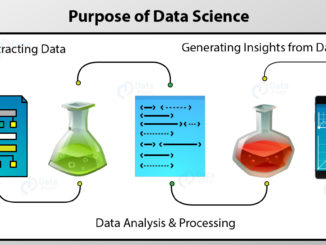
The 2017 Nobel Peace Prize was awarded to an Australian group dedicated to the banishment of nuclear weapons. Their objective echoes the Russell-Einstein Manifesto issued in London in July 1955, which highlighted the dangers posed by nuclear weapons and called for world leaders to seek peaceful resolutions to international conflict. From the perspective of the current North Korea crisis, the Nobel Laureates, Russell and Einstein, failed to stop the development of nuclear weaponry. Although rigorous 21st Century scientific advice on this issue is available to upgrade their unsuccessful attempt, it lies beyond their tribal understanding of science.
Both scientists greatly influenced 20th Century cultural development. In 1903 Russell published his best known essay, A Free Mans's Worship , advocating the worship of a science obeying the extinction dictates of the second law of thermodynamics, which Einstein called the "Premier law of all of the sciences" . While their comprehension of quantum mechanical science at that time was pragmatic, recent discoveries in quantum biology cancer research demonstrated that it was founded upon an unbalanced scientific worldview.
For thousands of years human tribes needed, and some still need, to obtain religious permission to be granted access to infinity. Fighting to the death in accordance to the 'survival of the fittest' paradigm observable in nature was associated with this superstitious evolution of tribal intellect. Accordingly, tribes had no option but to develop militant cultures devoid of a concept of the infinite. However, during the 21st Century, DNA has revealed that all human tribes now belong to a single species and if that species continually harms itself then it is suffering from a form of mental cancer. The mathematician Georg Cantor, whose work now upholds most of modern science, wrote that this disorder of the mind was a " myopic fear of infinity inhabiting the scientific mind ".
The Nobel Laureate of Medicine Szent-Gyorgyi, founder of the American National Cancer Research Foundation, in his 1972 Letter to Science diagnosed that mythical fear of infinity as a form of social cancer belonging to our Neolithic ancestors. The previously heroic compulsion to wage war, once necessary for tribes to survive and evolve, can be now seen as a medical problem. Religious and other mythological persuasions, once necessary to excite moral tribal crusades to wage war now threaten humanity with nuclear extinction.
Obviously, tribal science is part of the human evolutionary process. Tribal science can be programmed into a computer to entangle itself with human survival biosphere information. However, this would require the use of infinite fractal logic in order to generate human survival simulations, contradicting the fundamental structure of tribal science. Szent-Gyorgyi realized that the evolution of consciousness belonged to infinite living information entangling with extinction energies, again a contradiction to the now obsolete tribal science. In 2016 his cancer research had been developed enough to discover the nature of the antidote he was searching for. The computer programming needed to generate the human survival blueprint needs to use the antidote information in order to achieve a science finding his cure for cancer objective. A similar research methodology, proposed in 1979 by China's most highly honored physicist, Kun Huang, was successfully used by Australian Science-Art researchers, to measure the life force governing the evolution of seashells.
That discovery was recorded in Italy's leading scientific journal during the 1980s. In 1990 the World's largest technological institute, IEEE in Washington, reprinted that achievement as one of the most important optical discoveries of the 20th Century, placed alongside such names as Louis Pasteur and Francis Crick.
Just as Huang predicted, tribal science's obsession with warfare would object to the idea of life evolving towards infinity. Although the living mathematics found within the seashell fossil record was indisputably using ancient Greek geometrical concepts of infinity, the extinction obsession prevailed. When quantum mechanical mathematics was used to program the computer to generate futuristic seashell simulations, they became carcinogenic distortions, exactly as the Nobel laureate Szent-Gyorgyi predicted in 1972.
Ancient Greek philosophy contains vague atomic references associated specifically with ethical thought. The Stanford Encyclopedia – Ancient Atomism, revised Dec 2016 states " A number of important theorists in ancient Greek natural philosophy held that the universe is composed of physical 'atoms', literally' uncuttables. "
The general public, awaiting the abolition of nuclear weapons, needs know that such moral, atomic thinking was erased for centuries by the Christian Church and its associated political representatives and that visual evidence of this fact exists.
Marcilio Ficino was the Head of the Platonic Academy in Florence. In order to protect it from the Inquisition, he associated famous Christian figures from antiquity into aspects of his ethical atomic theories taught at his Academy. In 1480 the Vespucci family commissioned Leonardo da Vinci's mentor, Botticelli, to paint St Augustine in his Studio . The artist Ghirlandaio, also a mentor of da Vinci, was commissioned to paint St Jerome. Behind Botticelli's head of Augustine is a huge book next to another showing mathematical writing. The Saint is looking directly at a brass model used by geometers to explore cosmological reality. A spherical brass book-stud on the leather cover of the closed book is carefully placed into the orbit of his halo, a symbol of divine consciousness depicted by the image of an atom. This is not a coincidence. Ghirlandaio's painting shows a brass book-stud placed likewise into the orbit of Augustine's close colleague, St Jerome's halo. Whilst other evidence exists concerning ethical atomic functioning, these paintings were carefully designed to convey the idea of ethical atomism.
Leonardo da Vinci was severely criticized by his peers at the Platonic Academy in Florence for having no substantial knowledge about the ethical, atomic, spiritual mathematics taught by his mentors, including the mathematician, Lucas Pacioli, and the philosopher, Marsilio Ficino. Not only was da Vinci ignorant of the ethical atomic purpose of the Academy but as a military engineer he was committed to warfare. The Christian Church tolerated no pagan Greek atomic theories associated with ethical thinking. Da Vinci was the Chief Military Engineer in the Pope's Army, so the church made sure that over the centuries his name would become an enduring symbol epitomizing the wisdom of the Great Italian Renaissance, when in fact the very opposite is true. However, links between emotional intuition concerning the nature of infinity, contrary to da Vinci's worldview, certainly do exist.
One such link is Charles Wheatstone's 1838 invention of the stereoscope. The journal, Nature , published his obituary, in which it was recorded that his invention demonstrated that Leonardo's conviction that the flat plane of a painting could not contain a 3D image, was incorrect.
ï »¿James Joyce, regarded as one of the most influential ï» ¿and important authors of the 20th Century associated George Berkeley's New Theory of Vision (1709) with Wheatstone's invention of the stereoscope. Joyce referred to Berkeley's conviction that it was a fundamental geometrical truth that when parallel light rays fall on the eye, the senses were receiving an emotional geometrical intuition about the nature of infinite reality, which he described as " passions of the mind. "
Both Berkeley and Isaac Newton developed ancient Greek philosophies of science belonging to the workings of a living, infinite universe and both published statements that modern science was pretentious. Newton, in his published ' 28th Query Discussions ', emphatically stated that the pretentious science of his day embraced the idea that the universe was completely governed by mechanistic laws. He stated that the mass of objects in space was not the cause of gravitational force. In his Heresy Papers , discovered last century, he maintained that mechanistic science needed to be completed with a more profound spiritual (electromagnetic) philosophy based upon particles in motion. He was familiar with the above mentioned painting by Botticelli extolling the divine function of atomic particle movement. Whether Newton was right or wrong, quantum mechanics has been based upon the false assumption that he advocated the existence of a clockwork, mechanistic universe, when in reality he had advocated one balanced by infinite spiritual (electromagnetic) forces.
ï »¿Berkeley's spiritual optics work was considered acceptable to the Church because of its claim that his mathematical criticism of Newton and Leibniz's invention of calculus defended Christianity against any scientific disbelief in the worship of God. Coincidentally, during the 19th Century the invention of calculus was used by Michael Talbot as the basis of his holographic universe theory, where God becomes an ancient Greek mathematical, ethical, Godlike purpose, functioning within the workings of a holographic universe.
In conclusion, by rewriting tribal science, an optical, infinite, mathematical seashell physics discovery was made and acclaimed as one of the great discoveries of the 20th century. We are now poised to locate the crucial visual physics information to obtain the human survival blueprint needed to eradicate our tribal compulsion to develop nuclear weaponry. This article has been published to advise where the crucial physics principles for human survival are located. It is where the famous philosopher of science, Immanuel Kant predicted. The new physics principles belong to Kant's asymmetrical, electromagnetic field evolving within the artistic, creative mind.
As Kant demonstrated, the future of humanity is not to be found by linking science to the aesthetics associated with a new brotherhood of man. Instead, these ennobling artistic sentiments must be balanced with the artistic spiritual wisdom sought by the philosopher, Plato. The crucial ethical data associated with the Science-Art human survival blueprint needs to be identified.
This crucial atomic data belongs to the visual ' passions of the mind ', provided by the ability of artists who are now unconsciously creating paintings that contain a myriad of interlocking stereoscopic 3D images, which Leonardo da Vinci was convinced could never exist.
The sooner that quantum Science-Art cancer research biologists can provide the 2017 Nobel Peace Prize Group with indisputable scientific evidence that the new human survival science will make the development of nuclear weaponry a thing of the past, the better.
Proudly WWW.PONIREVO.COM
Source by Robert Pope



